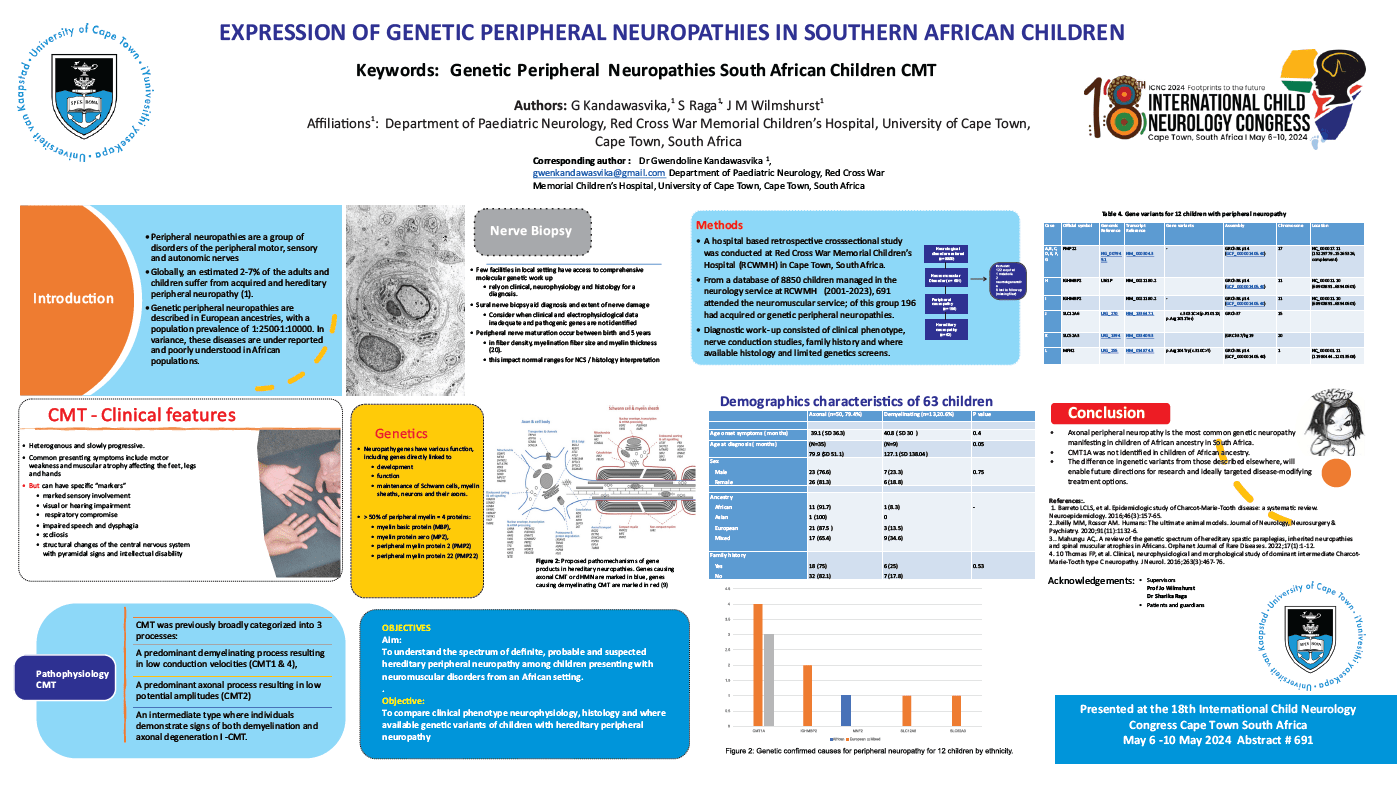Expression Of Genetic Peripheral Neuropathies In Southern African Children
Introduction: Genetic peripheral neuropathies are well described in European ancestries, with a population prevalence of 1:2500 -1:10000. In variance, these diseases are poorly understood in African populations. Objective: Characterize the spectrum of definite, probable and suspected genetic peripheral neuropathy cases, aligned with types of Charcot-Marie-Tooth disease (CMT), among children from an African setting. Method: A hospital based cross-sectional study was conducted at Red Cross War Memorial Children’s Hospital (RCWMH) in Cape Town. From a database of 13872 children managed in the neurology service at RCWMH (2001-2023), 691 attended the neuromuscular service; of this group 196 carried a diagnosis of peripheral neuropathy. Sixty-five children (33%) had either definite (genetic), probable (neurophysiology and or histology) or suspected (clinical) causes for their neuropathy. Diagnosis was based on clinical phenotype, nerve conduction studies and where available histology and limited genetics screens. Results: Of the 65 individuals with a possible genetic cause for their neuropathy, 12 (18.5%) were of African, 26 (40 %) Mixed, 26 (40%) European, 1(1.5%) Asian ancestry. 52% were females. Twelve were genetically confirmed (six CMT1A, two IGHMBP2 , one MFN2, one SLC12A6, one SLC52A3 and one SURF). Fifty-one had a probable and two a suspected cause for neuropathy. None of children with CMTIA were of African ancestry. Most children had axonal type of neuropathy (77%): affecting African 11/12, Mixed 18/26, European 20/26 ancestries. Conclusion: Axonal peripheral neuropathy is the most common genetic neuropathy manifesting in individuals of African ancestry in South Africa. CMT1A was not identified in children of African ancestry.
Gwendoline Kandawasvika
University of Cape Town
South Africa
Sharika Raga
University of Cape Town
South Africa
Jo Wilmshurst
University of Cape Town
South Africa

Gwendoline Kandawasvika
University of Cape Town
South Africa